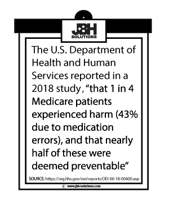During this COVID-19 epidemic, many hospitals are struggling to develop their “surge capacity,”...
UTILIZATION and the Path to AUTOMATION through ARTIFICIAL INTELLIGENCE
Ever notice how the customer service line can take you down a long and drawn out path of “options,” that only leads you to another menu? Sometimes, it shifts you to a new wait line which in turn, cycles you back to another automated customer service bot.
Turns out, businesses have learned that bad customer service is more profitable for companies. We can learn through Harvard Business Review more on the research of this hassle-based topic and make our own connections. But, the reality is these bad processes and business models exist in every industry and are primed for positive data transparency disruption.
Those of us working in Utilization Management, are frequently exposed to phone trees developed by the insurance company that would challenge the patience of a saint. Innumerable work hours are lost by providers and their staff, while they attempt to gain or confirm authorization of services. We have accepted that this process is the price of doing business with the payors, and that we have no choice. Or do we?

Denied prior authorization requests, burdensome, drawn-out processes and untimely decisions are just a few examples of areas primed for a process revolution. We’re not the only ones asking the pivotal question of “where do we go from here”, MCG nicely portrays the path to automation with the key lying in the data set connections allowing step-by-step automation between payer and provider.
The solution lies is healthcare data-technology disruption, utilizing Fast Healthcare Interoperability Resource (FHIR®). FHIR® and their new open-source software (OSS) by HL7®, offers a way of building healthcare connections with advanced interoperability, which maintains security during the exchange of Protected Health Information (PHI). The simplicity and flexibility of FHIR® allows for rapid innovation in any size health system, at a cost that is within the budget of even the smallest provider groups. The ability to collect and connect data, allows for a whole new world of solutions, leading to more efficient and effective care. The future of healthcare is indeed looking bright with newer lights shining on smarter ways to do business and care more.
About HL7® FHIR®
Created by Health Level Seven® International (HL7®), FHIR® stands for “Fast Healthcare Interoperability Resource®”. It serves the healthcare industry in a manner that provides for the standard exchange of healthcare information. FHIR® has become the means to consistently exchange healthcare data using a common governed set of resource specifications. FHIR® gives patients access to their health information and moves the healthcare system towards greater interoperability by linking major healthcare concepts that include Patient, Practitioner, Care Teams, Devices, Organizations, Locations and Services.
®FHIR and the FHIR [FLAME DESIGN] are registered trademarks of Health Level Seven International, registered with the United States Patent and Trademark Office. These trademarks are used with the permission of HL7 and the use of these trademarks does not constitute HL7’s approval or endorsement.

